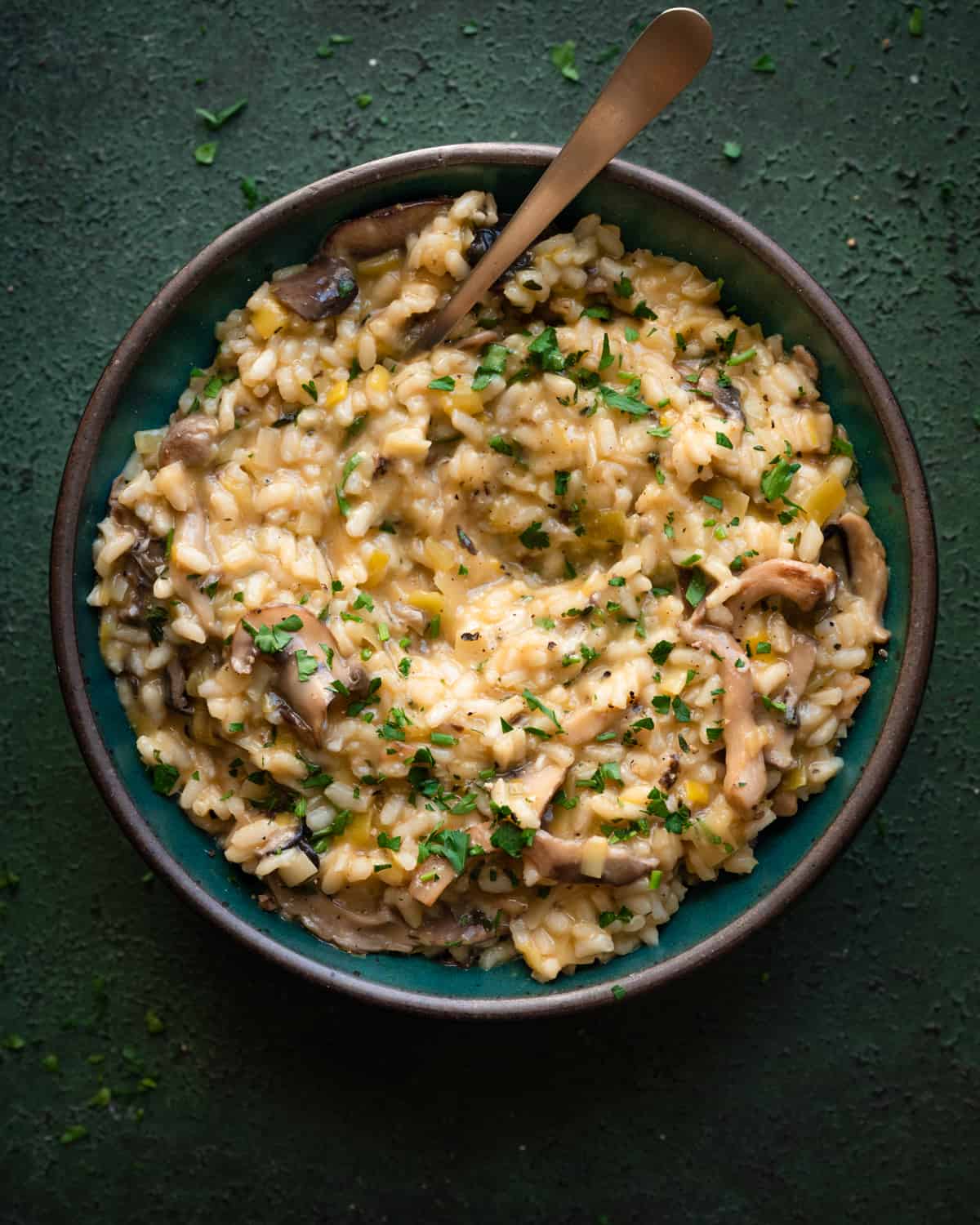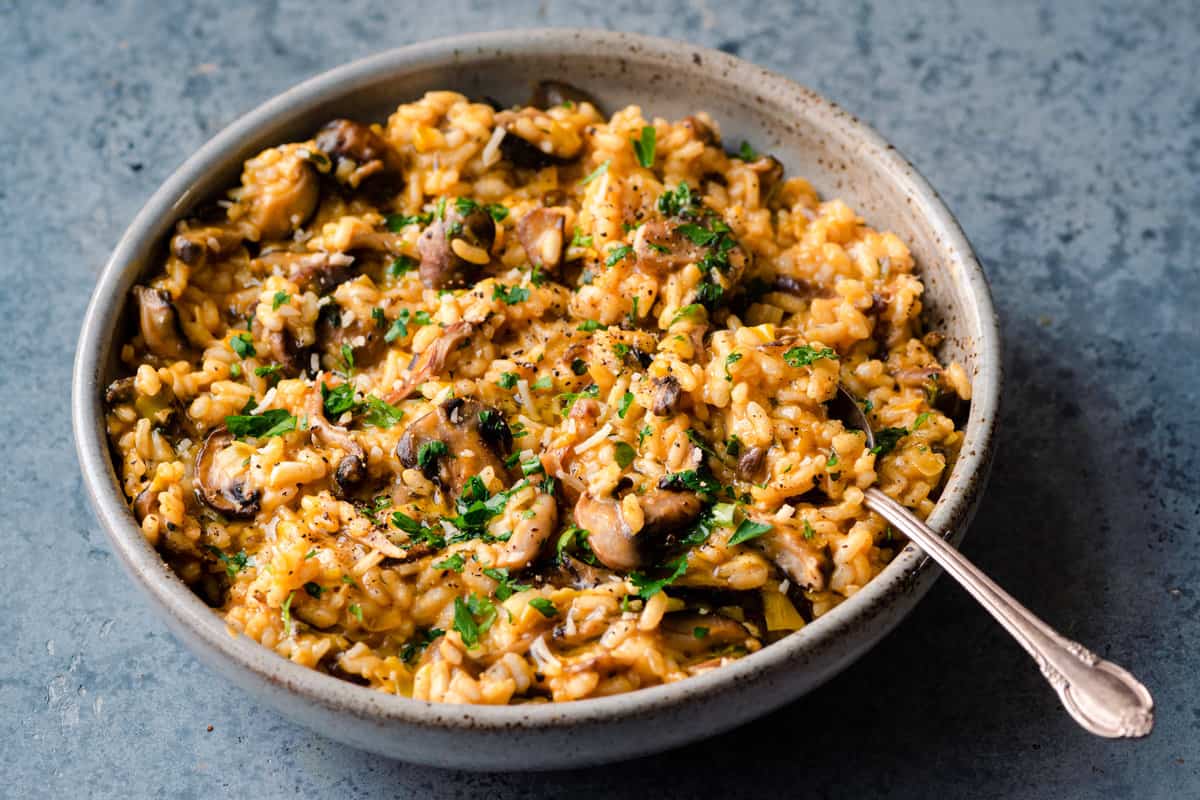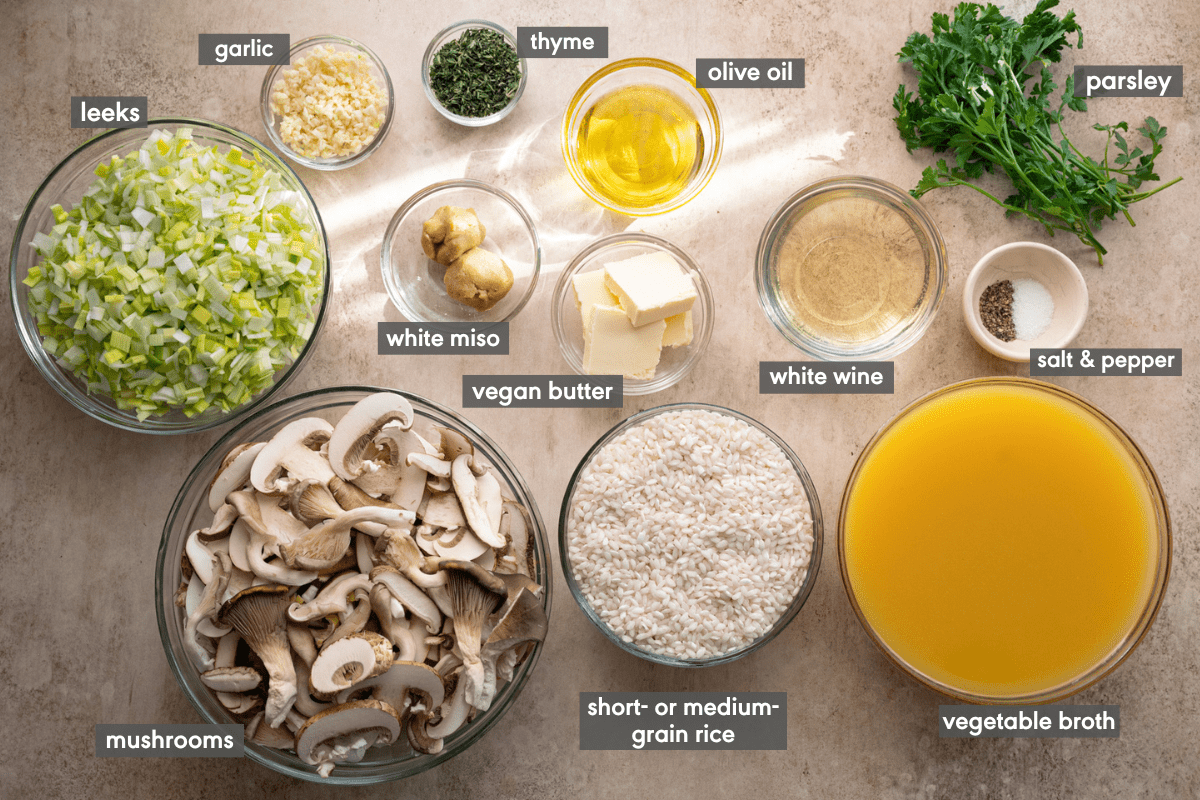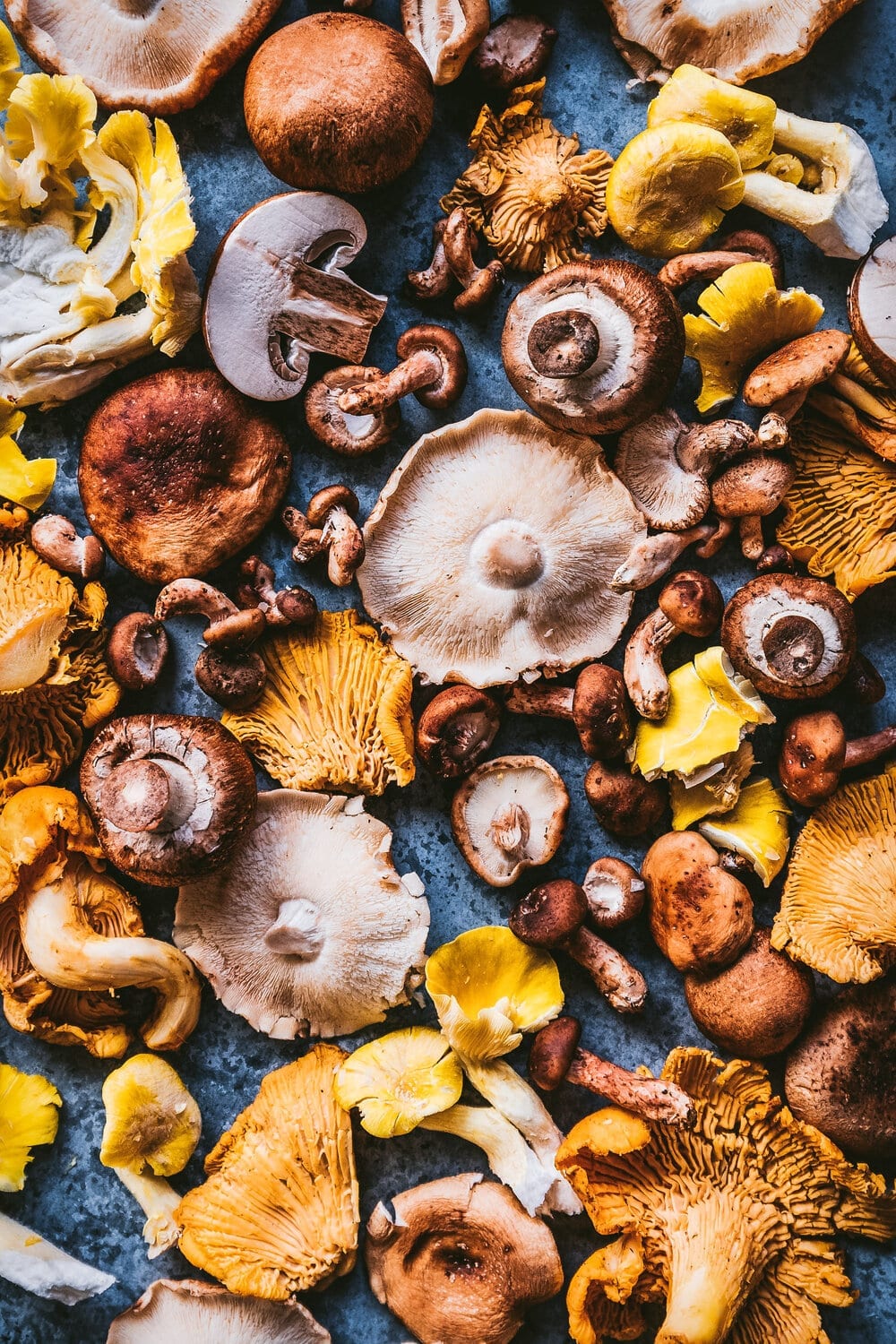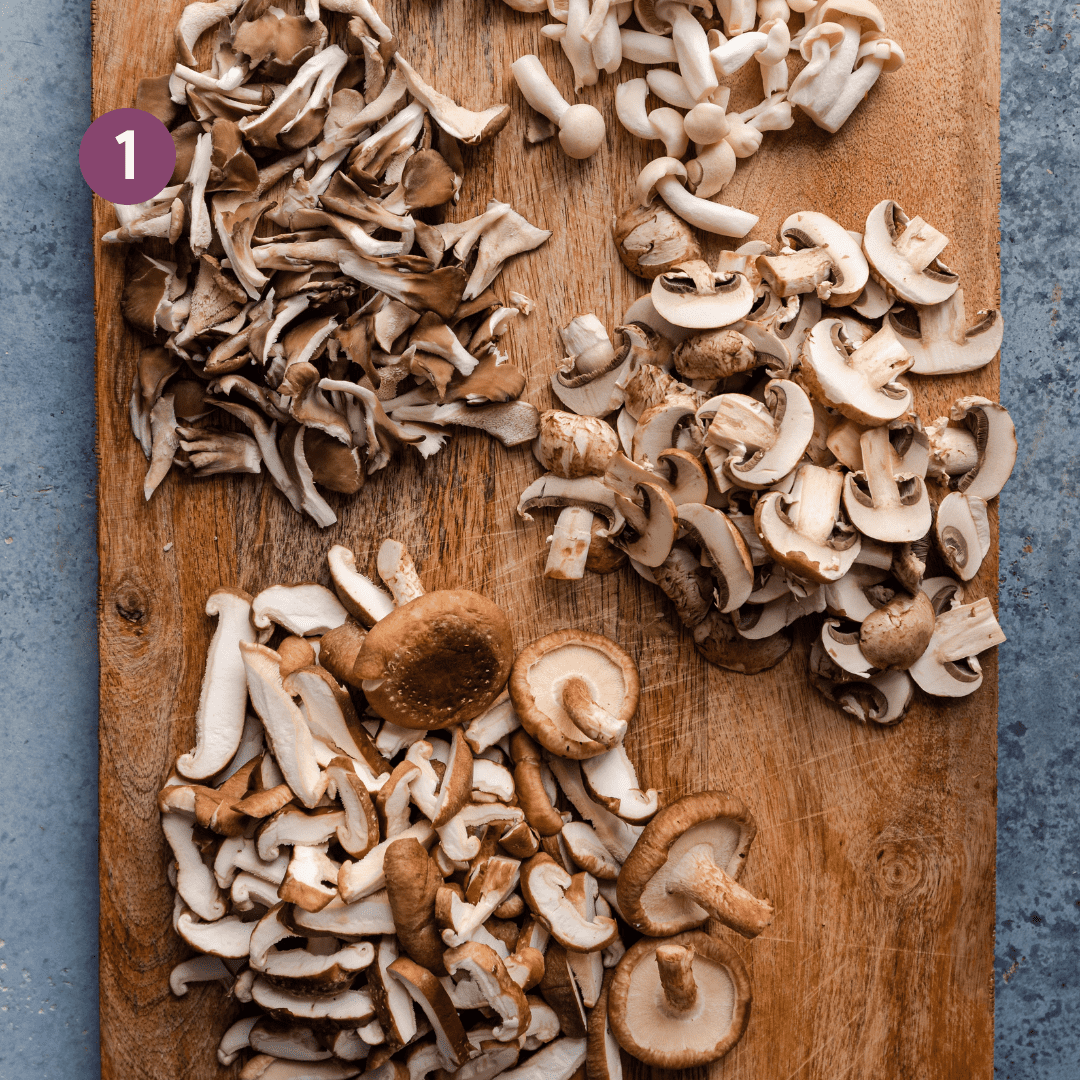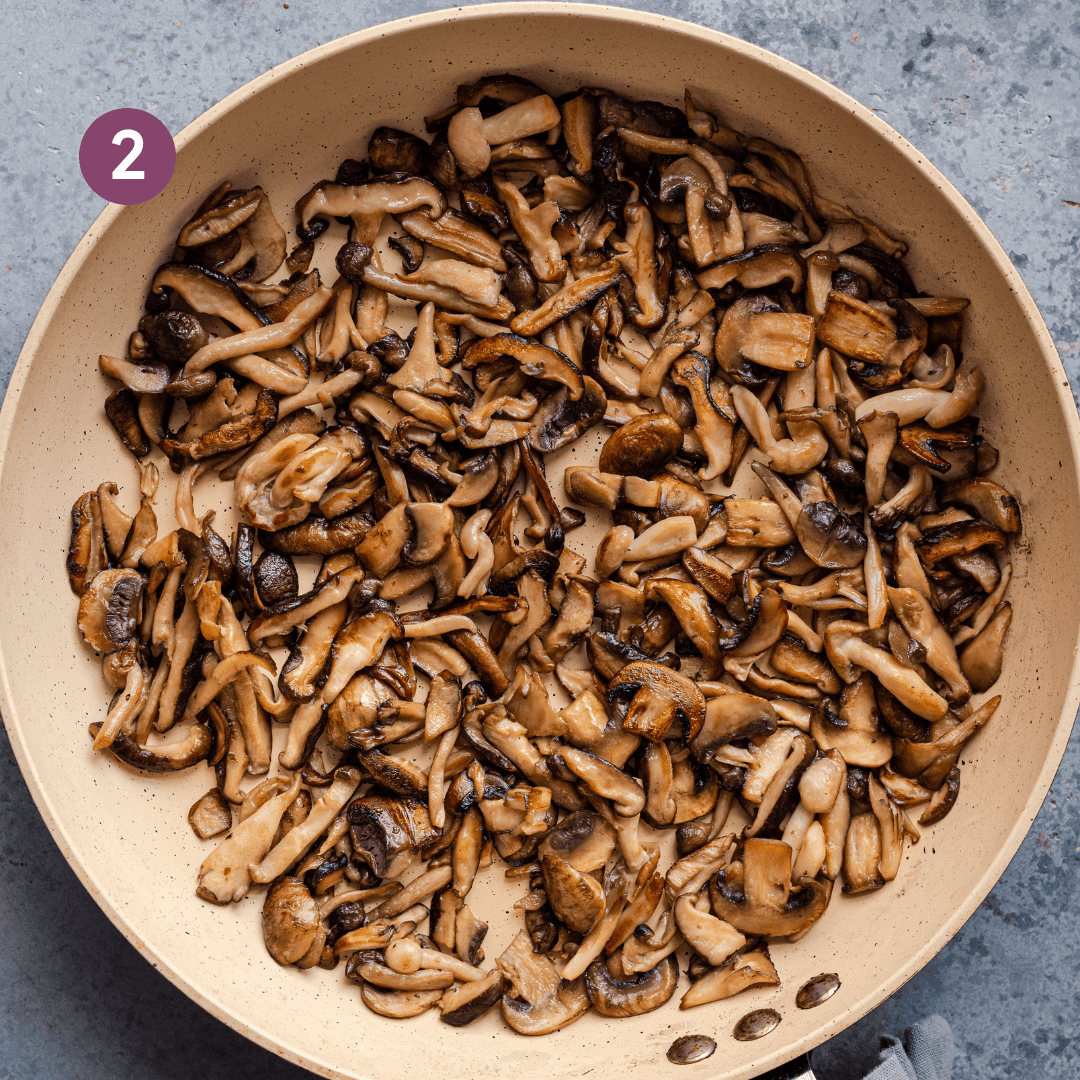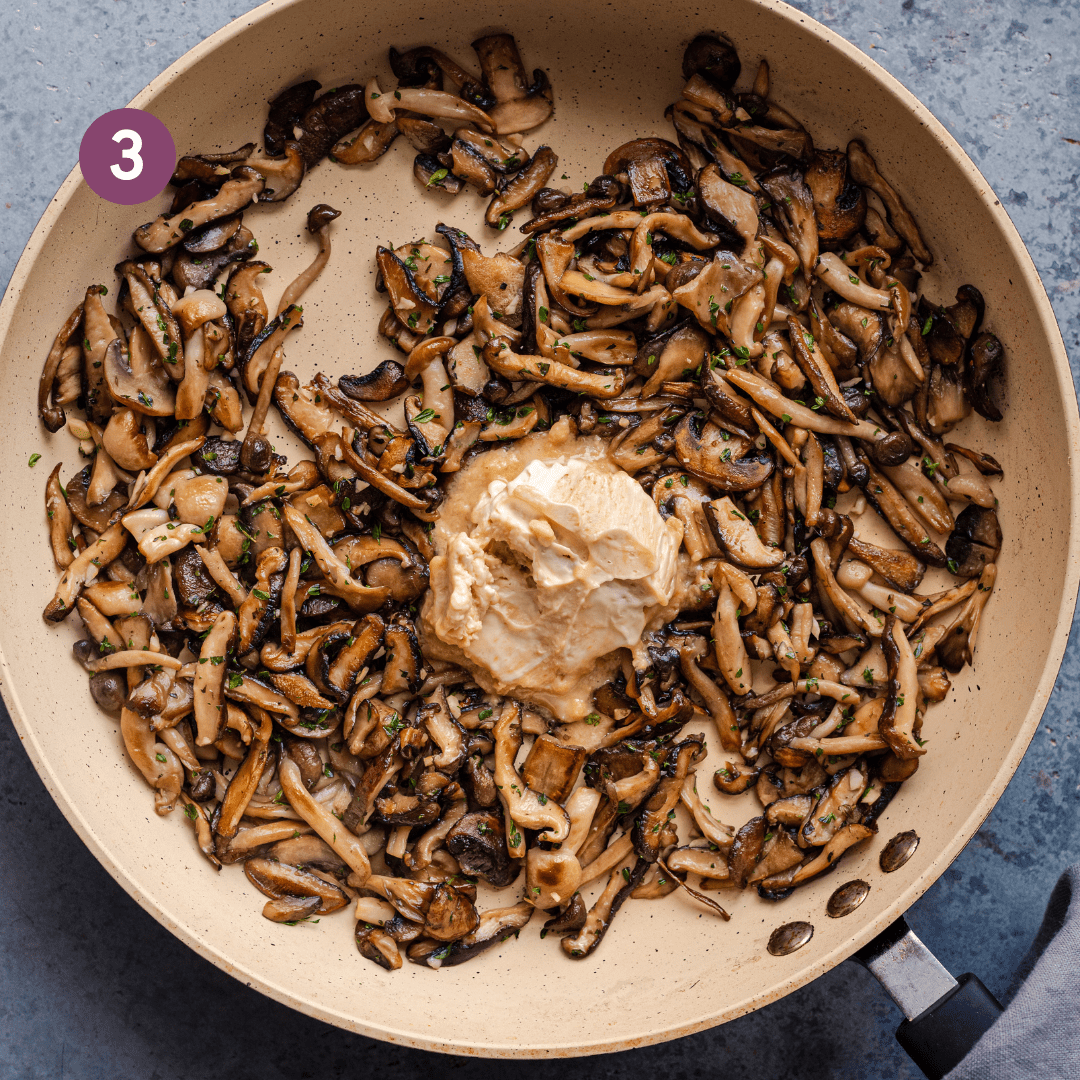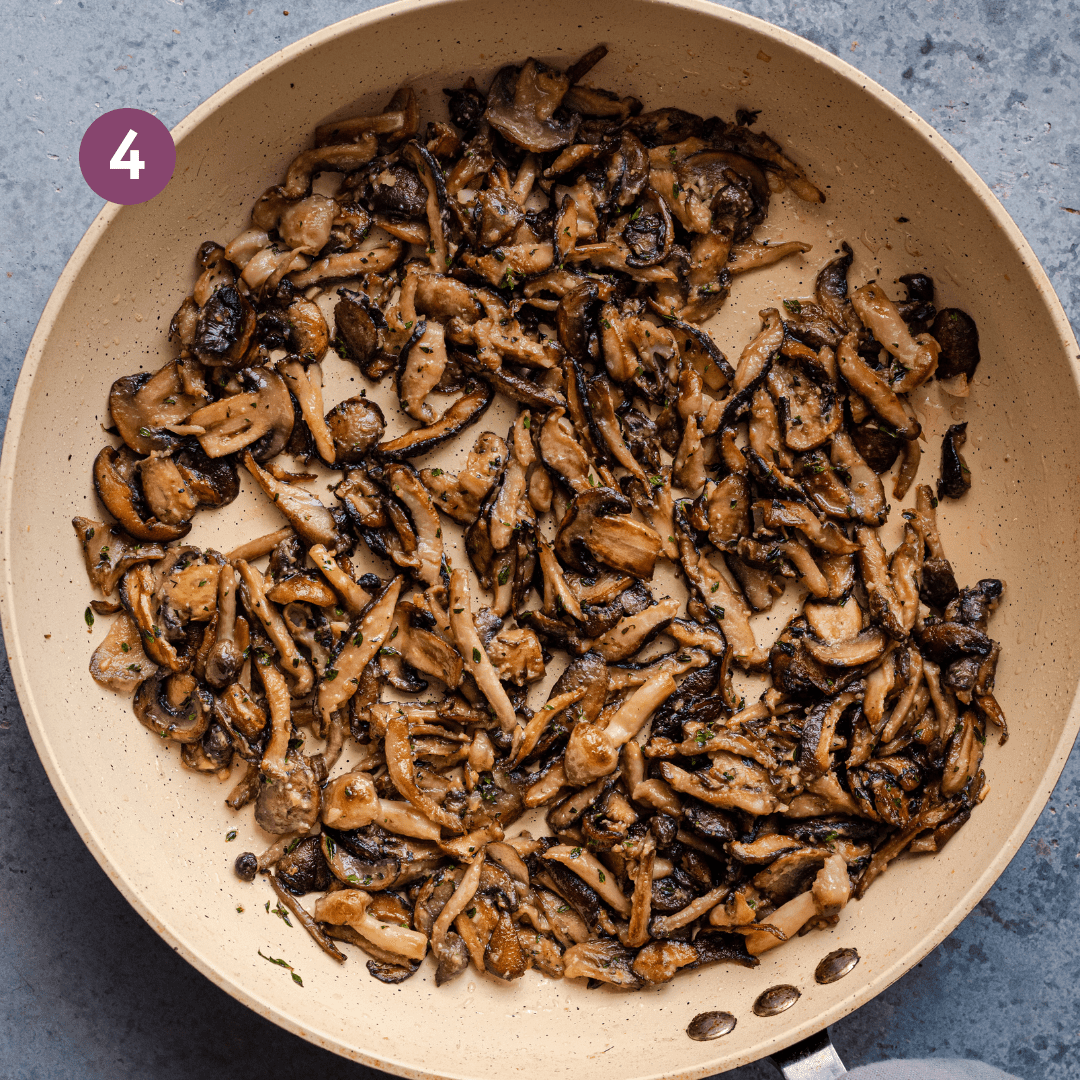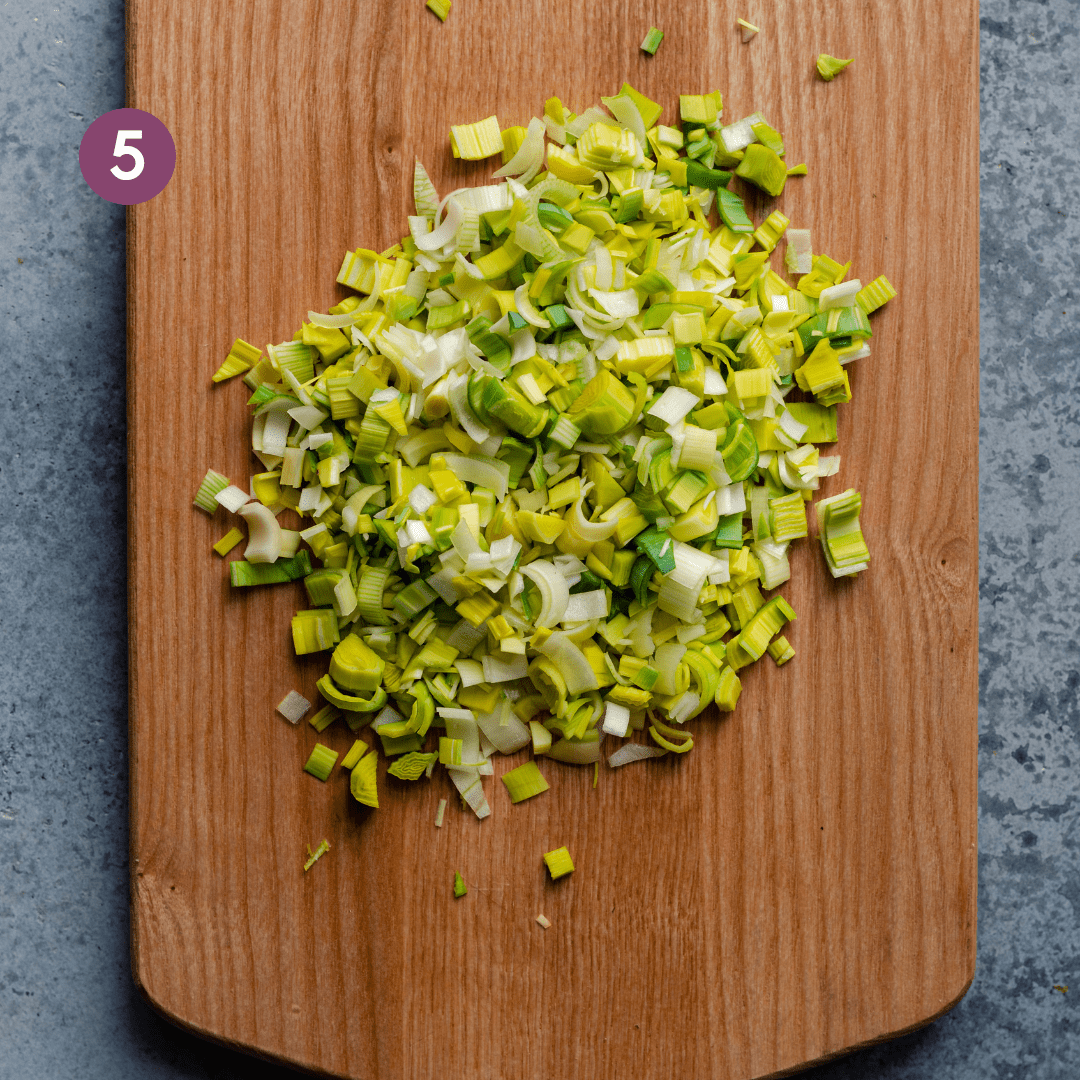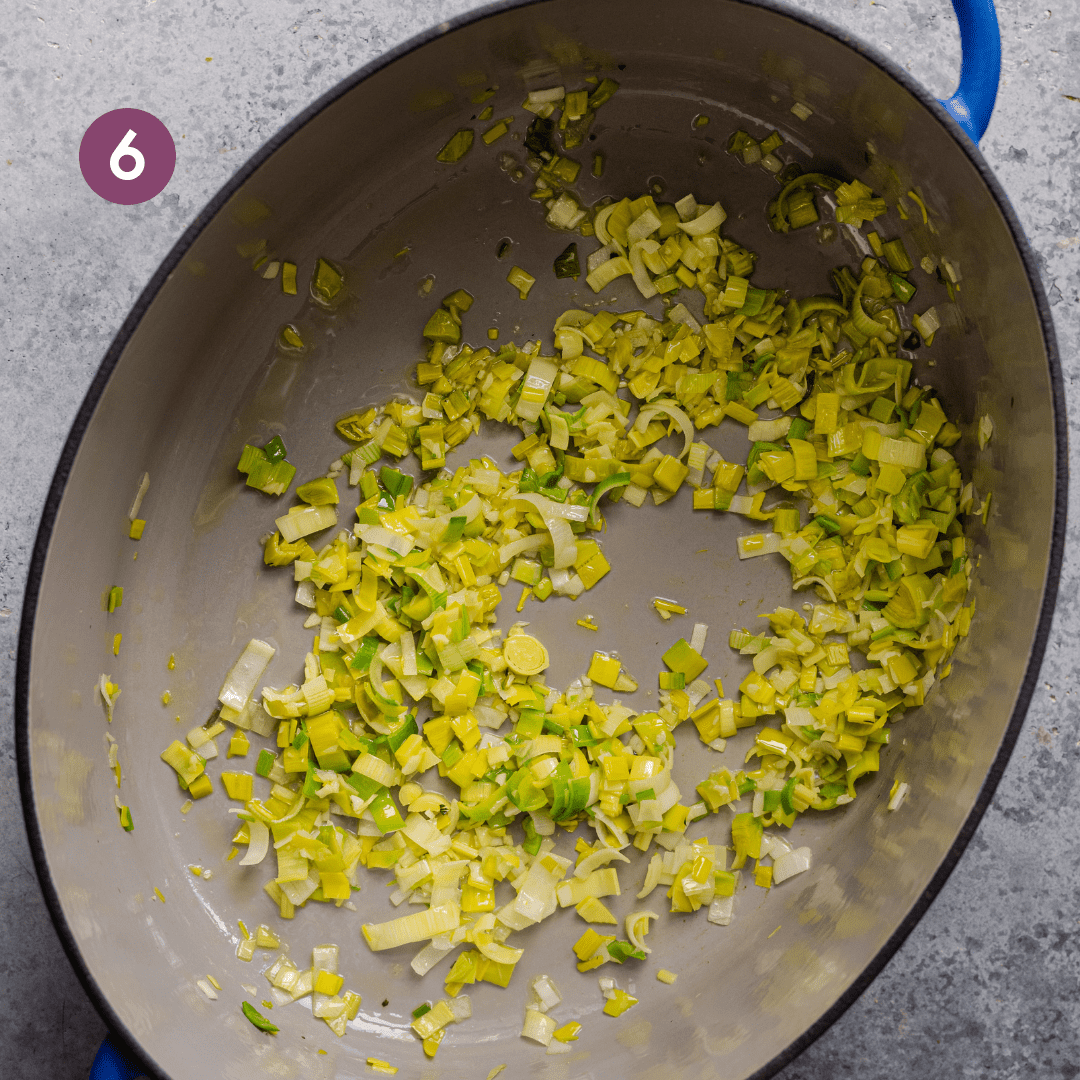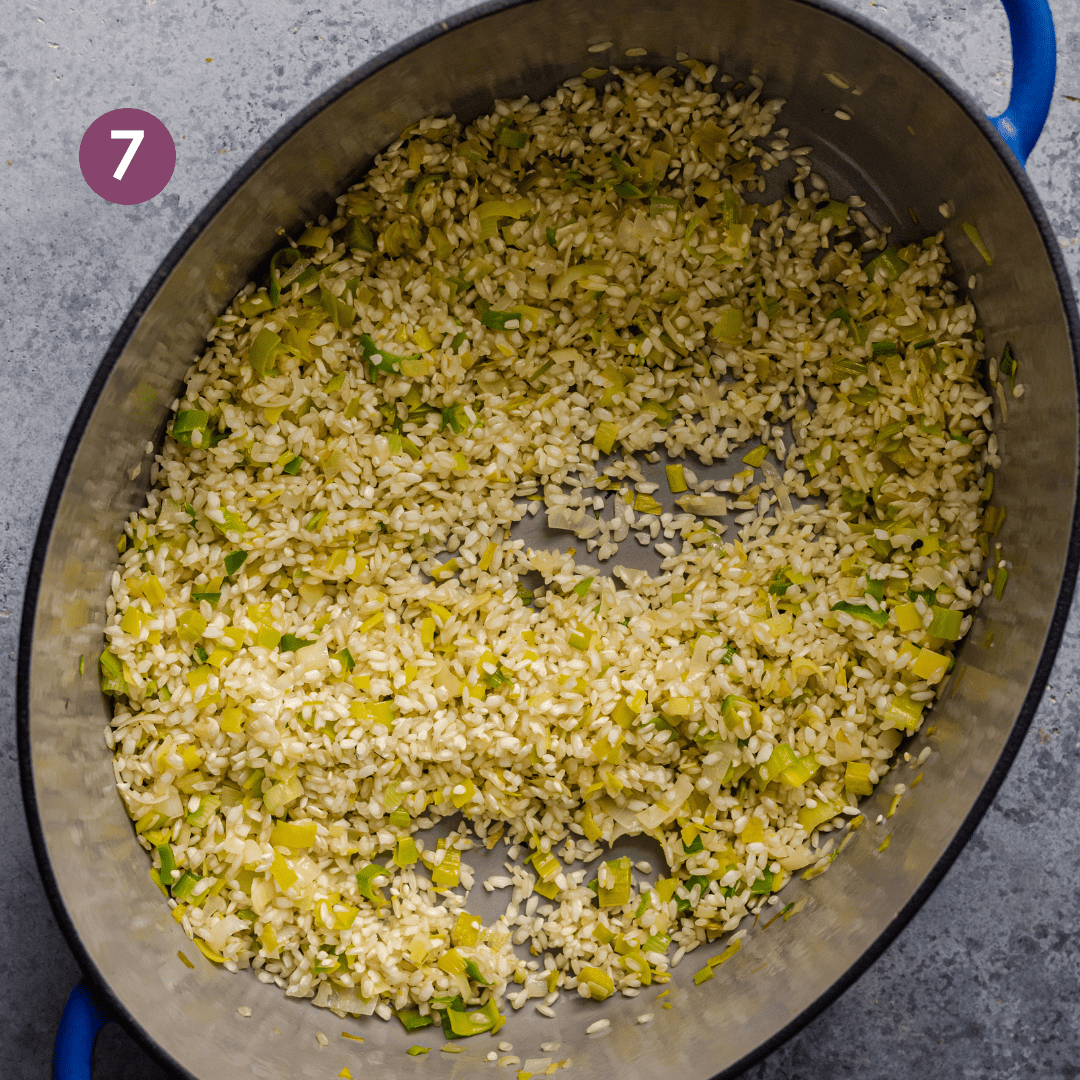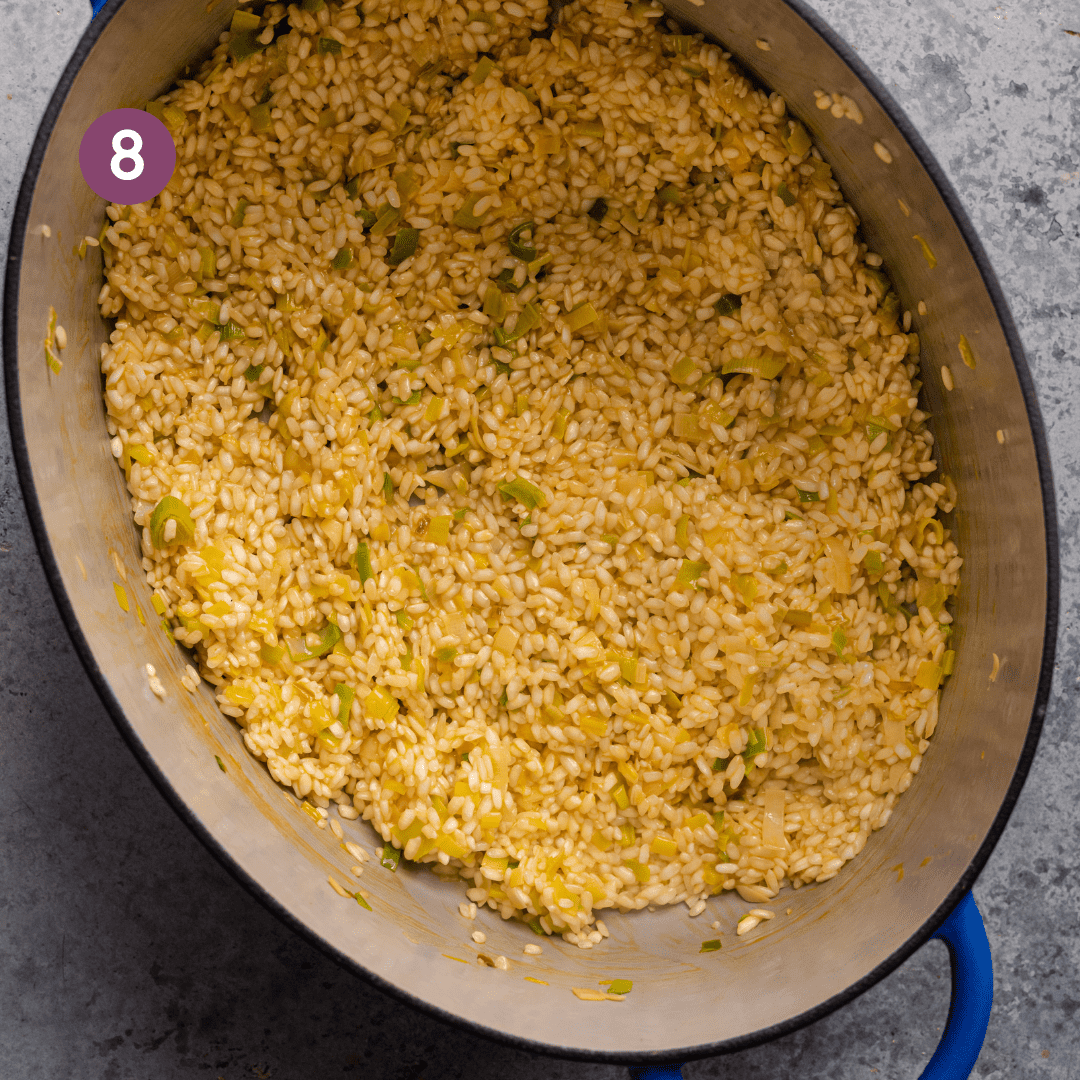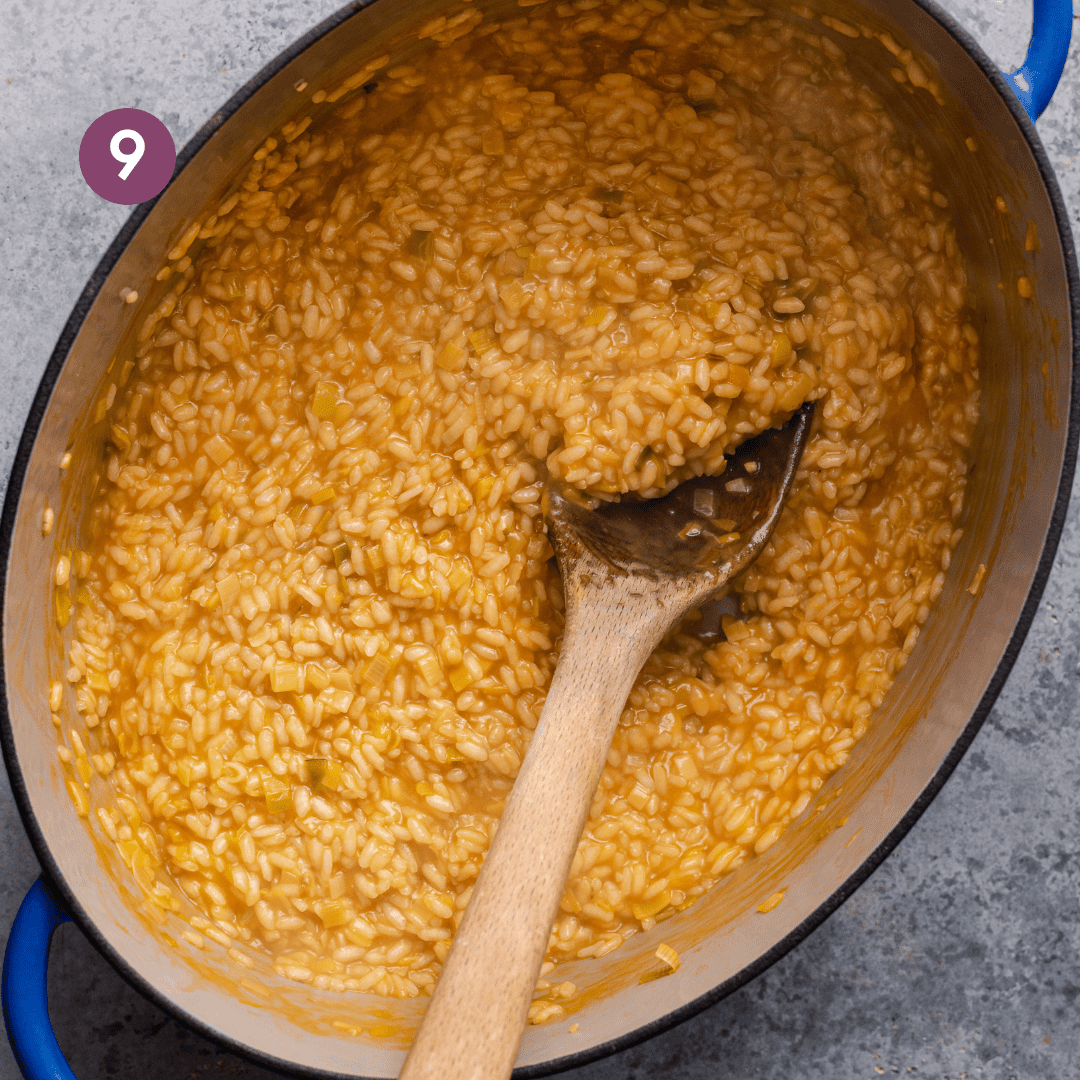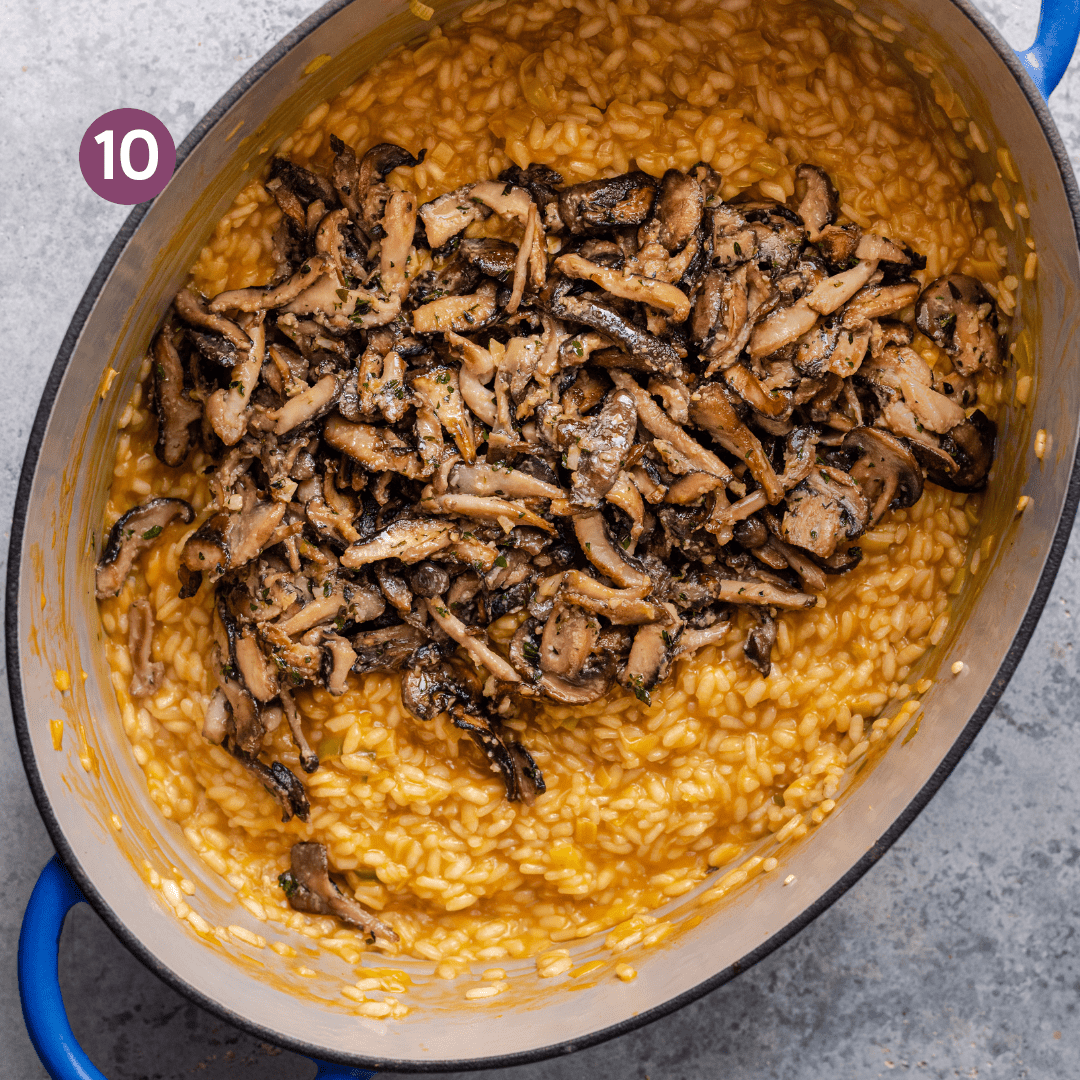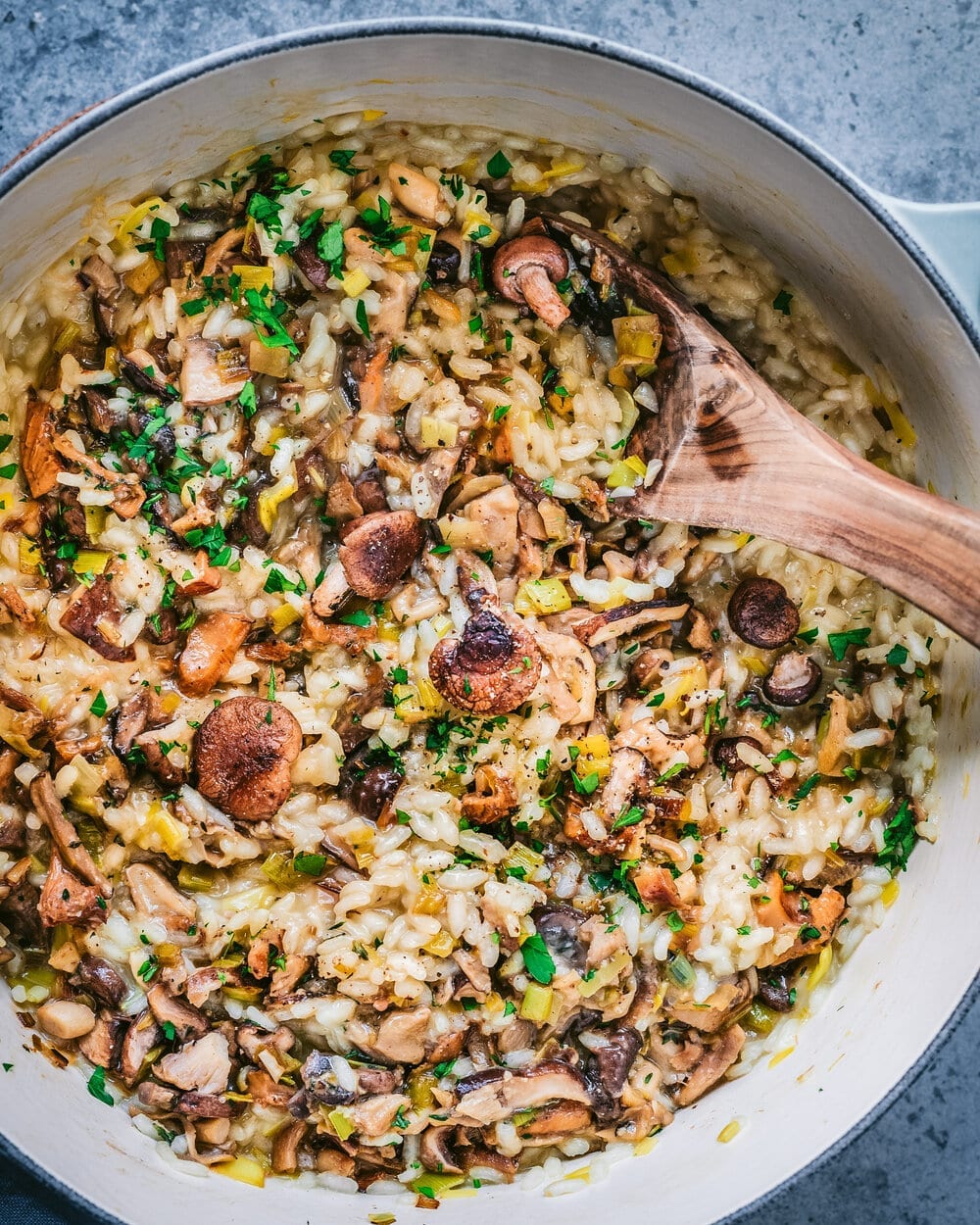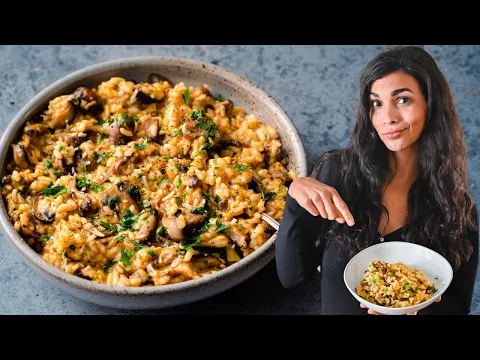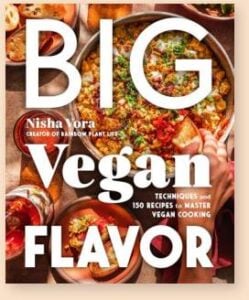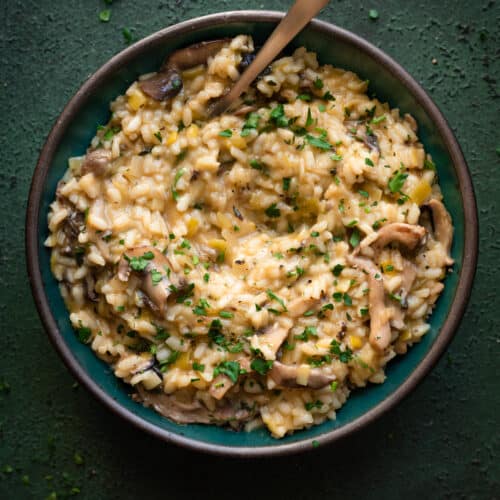With the perfect velvety and creamy texture and layers of deep savoriness from browned mushrooms and miso butter, it’s a show stopping dish to serve guests or on date night. Plus, this post is packed with all the tips and tricks for making excellent risotto I’ve learned since the first time I made it (16 years ago in my college apartment!).
Why this recipe works
The perfect risotto texture.
TLDR: This vegan risotto has peak risotto texture: velvety and creamy, not soggy and mushy, thanks to a few key techniques. After making risotto for over 15 years, I’ve picked up a lot of tricks and cleared up a lot of myths! Myth 1: Stir risotto constantly. Reality: This can make risotto gluey or gummy. Instead, this risotto gets stirred about every 30 seconds, leaving it with a perfectly velvety but not gluey consistency. Myth 2: Cook risotto until completely soft. Reality: Risotto is rice, not porridge. It should be creamy and somewhat soft but not overly soft. This risotto is also cooked until al dente, leaving you with a creamy but lovely texture that almost melts in your mouth but doesn’t feel like baby food. Myth 3: You can cook the vegetables and rice together. Reality: Doing so (1) it makes it difficult to stir the rice, so your rice texture won’t turn out great and (2) the vegetables (here, mushrooms) get soggy and overcook. Instead, this risotto recipe cooks the mushrooms separately so they retain their lovely meaty texture (and the rice also gets to keep its beautiful velvety texture).
Serious savory flavor.
Traditional risotto has a generous amount of umami from the dairy-based butter and parmesan cheese (sometimes, more than 1 cheese is added). To make up for that, I rely on a few ingredients. Miso butter: It’s made with vegan butter and white miso paste, and it mimics the rich savoriness found in dairy-based ingredients so well, turning this vegan risotto an outrageous flavor bomb. It’s also simple to make: just cream softened vegan butter with room temperature miso with a fork! Lots of mushrooms! Mushrooms are a natural source of umami, so the more, the better (within reason). I also like to use a few varieties of mushrooms that have a meatier taste/feeling, like shiitakes, maitakes, and oyster mushrooms.
Ingredient notes
Mushrooms. We use a lot of mushrooms (20 ounces, to be exact) in this recipe! You definitely don’t need to use all of the mushroom varieties I use, but aim for at least 2 different kinds of mushrooms for texture and taste variety. White Miso Paste. Miso is one those superstar ingredients that adds so much savory oomph to vegan dishes in a wholesome way. It’s a fermented soybean paste, so it’s a rich source of naturally occuring umami. Tips for buying: I use white miso (AKA shiro miso), the mildest kind of miso. If you can only find darker miso (e.g, red miso), add a bit less to prevent overwhelming the other flavors. Vegan Butter. The miso butter takes this recipe from good to wow-worthy mushroom risotto. It adds an indescribably rich flavor and mouthfeel tha’ll have your taste buds screaming “THERE’S A PARTY IN MY MOUTH!” Tips for buying: Earth Balance buttery sticks are a widely available vegan butter. I also like Miyoko’s butter (cashew-based so it cooks a bit differently) and Country Crock Plant Butter. Leeks. Many risotto dishes start by sautéing onions or shallots, but my preference is leeks because the mushroom-leek combination is irresistible: nutty and earthy meets sweet, mild, delicate flavors in an electric fusion. Substitute: About 2 small yellow onions or 6 large shallots. Arborio Rice or Carnaroli Rice. Arborio, a medium-grain white rice, is most commonly used for risotto, at least in the U.S., as it’s widely available. It works great here. If you can find Carnaroli rice (a short-grain rice) it makes for the creamiest risotto (it’s known as the “king of risotto” rice!). It releases its starch mostly slowly, which makes for a super-creamy risotto. And on practical grounds, it’s harder to overcook than Arborio rice. Find it online or at specialty stores/Italian grocers. White Wine. Most risotto recipes add a dry white wine after the rice is toasted. It enhances all the other flavors and adds a subtle punch of acidity to cut through the creamy richness. Substitute: Don’t consume alcohol? (1) Skip this step and start adding the veg broth to the pot after toasting the rice. OR, (2) replace some of the acidity by adding a nice splash of white wine vinegar when you ladle in the broth (any time during the risotto process). Vegetable Broth. I typically make risotto with store-bought vegetable broth to keep things quick. If you make or have homemade broth, it’s always a welcome addition. Flavor boost tip 1: For incredible meaty flavors to complement the mushrooms, use a vegan “chicken” broth seasoning or something like Better than Bullion. These are quite salty, so I usually use a bit less of them than called for on the package instructions. Flavor boost tip 2: And for truly phenomenal risotto, make this recipe with the homemade Mushroom Broth from my cookbook, The Vegan Instant Pot Cookbook!
Step-by-step instructions
Slice and tear your mushrooms. Heat a frying pan over medium-high heat with some olive oil. Once hot, add the mushrooms. Cook for 8-9 minutes, stirring only occasionally, until nicely browned. Reduce heat to medium. Add the thyme and half of the garlic; season with salt. Cook for 2-4 minutes, then add in the miso butter. Stir the miso butter into the mushrooms to incorporate. Cook for 2 minutes, stirring frequently. Set aside. Heat olive oil in a Dutch oven or deep sauté pan. Add the leeks and remaining garlic. Cook 2-3 minutes until leeks have just softened. Add the rice and toast for 1-2 minutes, stirring frequently. Deglaze the pot with the white wine and cook for a few minutes until the smell of booze wears off. Start ladling in the vegetable broth, 1 cup at a time. Stir frequently but not constantly. Add another cup of broth once most of the liquid has been absorbed and stir again. Repeat the process of ladling in broth and stirring until the rice is somewhat soft but still al dente (see Tips section on how to determine when risotto is done). Add the sauteed miso mushrooms to the risotto. Stir the mushrooms to combine. Add vegan parmesan (optional) and season to taste with salt/pepper. Serve immediately.
Tips for making the best vegan risotto
Making risotto can be intimidating, but once you get familiar with these tips, it’s pretty straightforward. And you don’t need dairy to make risotto creamy. Rather properly cooking the rice–as outlined in the tips below–is the secret!
Use hot vegetable broth.
Warm up your broth in a separate saucepan on the stove. No need to vigorously boil, but make sure you’re adding hot broth to cook the rice. Adding cold or room temp broth –» the rice cooks unevenly (i.e., some rice grains will be firm and others will be soft).
And add the broth gradually.
Don’t be tempted to pour in the broth all at once. When rice is flooded with a ton of liquid, it’s akin to just boiling rice. Boiled rice does not equal creamy risotto. In contrast, ladling in the broth over time forces the rice grains to get cozy and agitate each other, unlocking the natural starch found in medium or short-grain rice. Starches release = creaminess.
Deglaze the pot.
When you pour the wine into the rice, use the liquid to scrape up any bits of food stuck to the bottom of the pot. This not only infuses more flavor into the risotto but also makes it easier to stir, ensuring the rice doesn’t stick. Stir often but not constantly. Don’t stir risotto constantly. Instead, aim to stir it about every 30 seconds. Stirring constantly aerates the rice » gluey texture. Once the broth is mostly absorbed, that’s when you add the next ladle of broth. Cook until al dente, not overcooked and mushy. There’s a misconception that risotto should be very soft and requires 45 minutes of stirring. Not so. Risotto should be creamy and somewhat soft but still al dente. After you add the first ladle of broth, it shouldn’t take much longer than 20 minutes. Not sure what al dente should taste/feel like? Do the smear test outlined in this article. Place a grain of rice on a cutting board and smush it with your finger. The grain should smear fairly smooth but you should still be able to see a bit of the white, al dente center of the rice.
Get those mushrooms meaty browned.
A lot of mushroom risotto recipes just briefly cook the mushrooms for 4 to 5 minutes. BUT, if you want the mushrooms to shine, you gotta allow them to sear and brown beautifully. Use medium-high heat and cook for 8 to 10 minutes. This is also one of the secrets behind my fan-favorite Vegan Mushroom Stroganoff.
Watch the video!
I hope you give this incredibly delicious Vegan Mushroom Risotto a try! If you do, please leave a rating and review below with your feedback and tag me on Instagram with your remakes!
Big Vegan Flavor
Techniques and 150 recipes to master vegan cooking.
